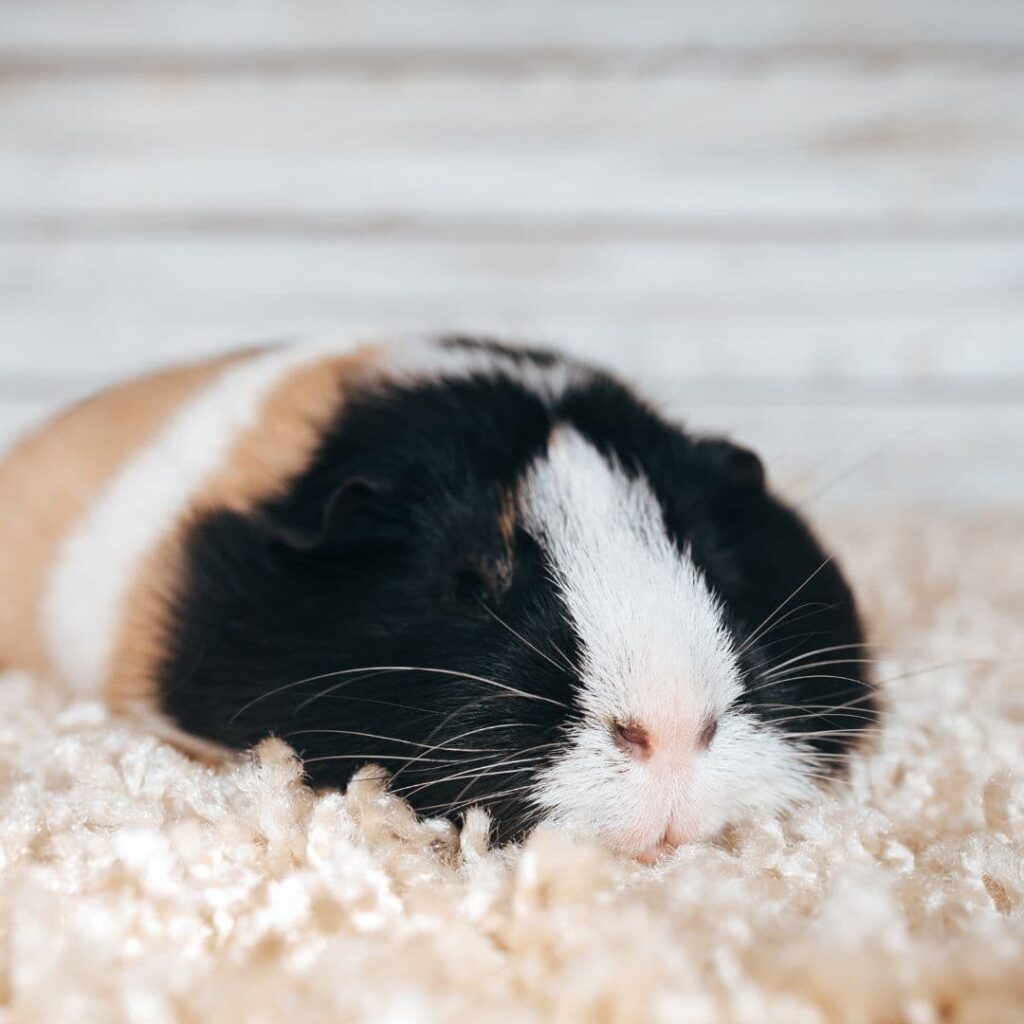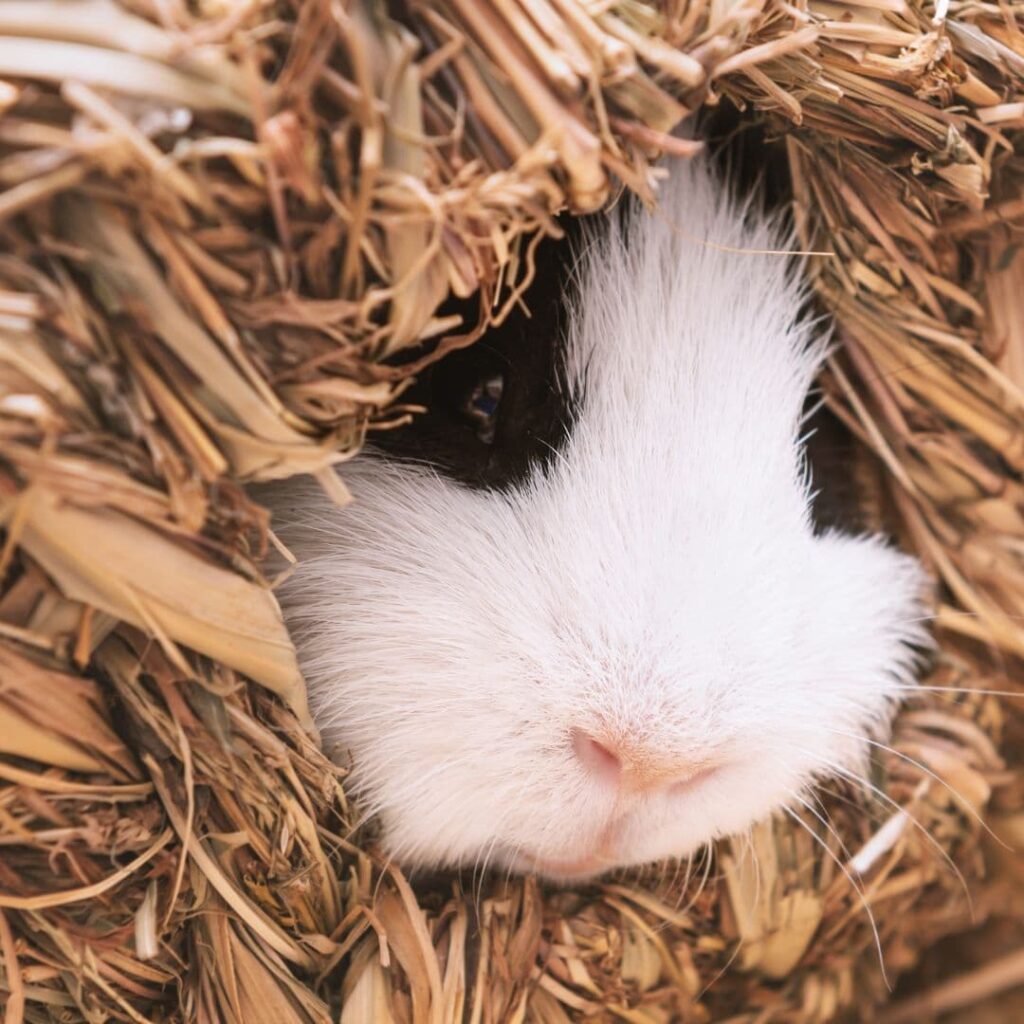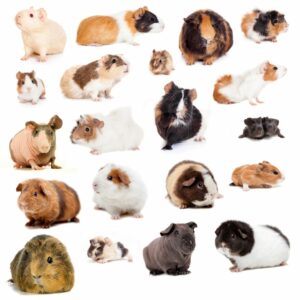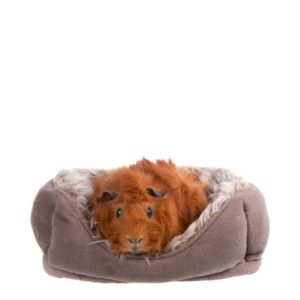The remarkable ability to enter a state of prolonged dormancy during harsh winters is a well-adopted survival strategy among all kinds of species. But what about our fuzzy friends? Do guinea pigs hibernate?
Unlike some of their relative rodents, guinea pigs don’t hibernate. But they can go through similar behavior, especially when it’s cold.
In this piece, we will discuss why your guinea pig may be in a deep sleep, what’s the ideal temperature for guinea pigs, explain a similar phenomenon to hibernation, and how to keep them warm during winter.
Table of Contents
Guinea Pigs and Hibernation
Unlike hibernating animals, guinea pigs remain active throughout the year.
However, guinea pigs may enter a state of torpor – a behavior that resembles hibernation.
Torpor in guinea pigs refers to a state of decreased metabolic activity and reduced physical activity that some guinea pigs may enter during periods of extreme cold or when facing food scarcity. Torpor is not the same as hibernation, as guinea pigs do not possess the biological adaptations for true hibernation.
During torpor, a guinea pig’s body temperature drops slightly, and they become less active. This helps them conserve energy in adverse conditions. Torpor is a survival mechanism that allows guinea pigs to endure brief periods of unfavorable environmental conditions until they can resume their normal activity when conditions improve.
Understanding the Difference Between Hibernation and Torpor

Although hibernation and torpor are incredibly similar behaviors, it’s important to know what’s the difference and whether your guinea pig can enter the state of torpor.
Let’s quickly check the differences between hibernation and torpor.
Hibernation
Hibernation is an extended period of deep sleep that some animals enter during the cold months. While in hibernation, an animal’s bodily functions slow down significantly. Their body temperature drops, their heartbeat and breathing slow down, and their metabolism decreases.
This is simply an energy-saving state that allows animals to endure the winter with limited food intake. Animals in hibernation can remain dormant for days, weeks, or even months.
Torpor
On the other hand, torpor is a mild form of deep sleep that helps animals conserve energy when food is scarce. But unlike hibernation, torpor lasts for a shorter period, typically just a few days or nights.
Guinea pigs can enter a torpor state if exposed to cold conditions – usually when the environmental temperature is lower than their body temperature.
Do Guinea Pigs Hibernate in the Wild?
In their natural habitat in South America, guinea pigs do not hibernate. Unlike bears, which enter a deep, prolonged state of dormancy during the winter, guinea pigs have a different way of coping with temperature changes.
Guinea pigs are warm-blooded mammals, much like humans. This means that they can regulate their body temperature to some extent. When the weather gets colder, guinea pigs exhibit various behaviors to adapt without going into hibernation. These behaviors might give the impression of hibernation, but it’s important to clarify that they are not the same.
Do Guinea Pigs Hibernate in Captivity?

No, guinea pigs do not hibernate in captivity either. Similar to their behavior in the wild, guinea pigs remain active throughout the year when kept as pets. While they may exhibit some changes in behavior during colder months, such as reduced activity and eating slightly less, these changes do not indicate hibernation.
What Is the Right Temperature for Guinea Pigs?
Unlike hibernating animals that lower their body temperature significantly, guinea pigs maintain a stable body temperature throughout the year. This means they continue to regulate their body heat and stay alert, ensuring they remain active and ready to engage with their surroundings.
A guinea pig’s normal body temperature ranges from 102°F to 104°F (38.8°C to 40°C). Any temperature higher than this can easily cause a heat stroke.
Similar to us, piggies prefer lower temperatures instead. But keep in mind that this doesn’t mean they can be in a cold space either.
- Ideal environment temperature: is from 65°F to 75°F (18.3°C to 23.8°C).
- Too cold: If the temperature drops below 60°F (15.5°C).
- Too hot: if the temperature is above 75°F (23.8°C).
Guinea pigs are sensitive creatures, and maintaining a consistent room temperature is critical for their well-being. But note that sudden temperature changes, whether hot or cold, can negatively affect their health.
Pro tip: To ensure the right conditions for your piggies and keep them safe and sound, it’s a good idea to keep a thermometer in your guinea pigs’ living area.
How to Recognize and Prevent Hypothermia

Besides torpor, which isn’t necessarily life-threatening, guinea pigs are often at risk of hypothermia.
A guinea pig can develop hypothermia when their body temperature falls below their normal range of 102°F to 104°F (38.8°C to 40°C). It’s a serious concern for guinea pigs exposed to cold temperatures for an extended period and can often be fatal.
Here are the common signs that indicate your piggy may be too cold:
- Cold body parts: Guinea pigs can easily get cold, especially on their ears, nose, and feet. If these areas feel cold to the touch, it’s an early sign of your guinea pig feeling chilly.
- Shivering: Just like humans, guinea pigs shiver when they’re cold, and they may huddle with their fellow companions for extra warmth.
- Deep sleep/torpor: If you notice that your piggies are sleeping more often and longer, they’re most likely feeling really cold and may enter a torpor state.
Pro tip: Try to use a thermometer as an extra measure. Place a thermometer near your guinea pigs’ cage to monitor the room temperature, ensuring it remains within the optimal range.
If you suspect your guinea pigs are experiencing hypothermia or any health issue with similar symptoms, consult your veterinarian immediately.
What to Do if Your Guinea Pig Is Not Moving but Still Breathing?
If your fuzzy friend is inactive but still conscious and breathing, there are a few possible reasons to consider:
Your Guinea Pig May Be Frightened
Feeling frightened is one of the most common reasons for a guinea pig’s inactivity. This typically happens if a piggy is a new pet and only recently became a part of the family.
But don’t worry. Most of the guinea pig breeds are shy, and it can take some time for your fuzzy friend to get used to a new environment.
Potential Torpor Behavior
There’s also a high chance that your piggy is in a torpor state. If you find your piggy in a deep sleep during colder weather, try to warm them up to see if they awaken gently.
Remember: Avoid fast temperature changes or moving them too much, as any drastic change can be dangerous for your piggy during this state.
Your Guinea Pig Is Getting Old
Another common reason for guinea pigs being inactive is old age. Just like us, a majority of senior piggies become less active throughout their lifespan. They are also easily scared so this situation is often a normal behavior for an older guinea pig.
Older piggies are more prone to health issues. If you notice additional problems along with inactivity, like loss of appetite or no defection, take your piggy to the vet as soon as possible.
Reminder: Since guinea pigs can live only about five to seven years, they typically reach senior age when they’re about four to five.
Your guinea Pig Might Be In Pain
An inactivity or slowed behavior in a guinea pig can also happen due to severe pain. Guinea pigs are usually under a lot of pain when they’re sick and develop different kinds of health conditions.
This mostly happens to senior piggies, but younger ones can experience the same. Here are some of the most common health issues in guinea pigs to be aware of:
- Scurvy – Vitamin C deficiency that often leads to health problems such as poor appetite, diarrhea, weight loss, lethargy, joint pain, swollen and bleeding gums, and sometimes hair loss.
- Bumblefoot – a common bacterial infection that affects the feet of guinea pigs and leads to inflammatory reactions.
- Respiratory tract infections.
- Pneumonia – an inflammatory condition of the lung.
Keeping Your Guinea Pigs Warm During Winter
If you live in an area with cold winters or falls, it’s critical to understand how susceptible your piggies may be to health problems during low temperatures.
Here are some tips to help you ensure your guinea pigs stay warm and cozy during the frosty months:
Indoor Living
Considering that a proper temperature is important for your piggy’s well-being, it’s ideal for them to live indoors, as they’ll be in an environment with balanced conditions.
Although they prefer warmer temperatures, guinea pigs may become accustomed to slightly lower temperatures with time.
Just make sure to avoid drastic changes and keep the room temperature above 60°F (15.5°C) since cold weather can be detrimental to their health.
Pro tip: Guinea pigs love being active and playing outdoors. To provide fresher air and keep them healthy, don’t forget to spend some quality time with them outside when the weather is pleasant enough.
Reducing Drafts
Guinea pigs are susceptible to drafts, which can harm their well-being. So try to place their cages away from windows and doors to avoid draft areas. In case you decide to keep your piggies outdoors, well-insulated sheltered housing is a must to protect them from drafts.
Optimizing Temperature
To maintain the ideal temperature range, consider heating methods such as additional bedding, cozy hideaways, and blankets during the colder season.
If you don’t have any of these items, here are a few high-quality ones to consider for your fuzzy friends:
- Kaytee Clean & Cozy White Bedding
- BWOGUE Guinea Pig House Bed
- 4 Pcs Waterproof Guinea Pig Blankets by Reginary
Avoid High Temperatures
While it’s important to keep your piggies warm, keep in mind to not overdo it. A guinea pig can’t regulate its body through sweating, so a temperature that’s too high can often lead to a heatstroke – and we don’t want that.
Encourage Exercises
Most guinea pigs typically remain active throughout the entire year, so ensure they have sufficient space to move around and play with each other. Of course, don’t forget to tag alone too!
This will help them to exercise enough and stay in good physical condition, even in winter.
Outdoor Care for Guinea Pigs During Winter
While it’s ideal and a much safer option to keep your piggies indoors, I understand that not everyone has enough space inside.
If you can’t make enough room for your fuzzy friends inside, it’s possible to keep them warm and safe outdoors. And you can do this by providing a hutch/cage for your guinea pigs.
To get a better picture of how an insulated hutch for guinea pigs should look like, check this quick YouTube video:
But remember, it takes some extra time, budget, and effort to make one. Here are a few safety measures you should take if you decide to keep your guinea pigs outdoors:
Use Hutch Covers
Hutch covers are like blankets for your guinea pig’s home. They’re made of quality materials that keep the cold out and the warmth in. By placing a waterproof hutch cover over your guinea pig’s cage, you create a barrier against chilly winds and low temperatures.
Extra Bedding
Bedding serves as a multi-purpose solution. It provides a comfortable surface for guinea pigs to rest on and keeps them warm by allowing them to huddle together. Also, it absorbs moisture, preventing discomfort during cold and wet weather.
Use Water Bottles
Guinea pigs need access to fresh water, regardless of the temperature. And when the temperature drops, water in the bottles can freeze, making it hard for your pets to stay hydrated.
A water bottle for pets is designed to keep the water fresh and insulated. It’s a must for outside habitats to ensure your guinea pigs always have access to a drink.
Raise the Hutch
Elevating the hutch off the ground has a dual benefit. It helps in preventing the cold from seeping through the floor and offers protection from moisture.
You can use bricks, and concrete or wooden blocks, to keep the hutch from the ground. Just make sure the hutch is secure and doesn’t wobble.
Pro tip: You can also place a layer of straw or hay beneath the hutch to provide extra warmth from below.
Vet Q&A
What do guinea pigs do In the winter?
During the winter, guinea pigs exhibit a range of behaviors to adapt to the colder climate:
Nesting: Guinea pigs may build cozy nests with bedding material to stay warm and comfortable.
Cuddling: They might huddle with their cage mates to share body heat.
Reduced Activity: Guinea pigs may be less active during cold weather, preferring to conserve energy.
Eating Less: They might eat slightly less during the winter, but it’s not a complete halt in eating as seen in hibernating animals.
Guinea pigs will likely spend more time in their cozy sleeping areas and hiding spaces over the winter months. So, try to do daily spot cleans to remove and replace any dirty bedding.
This will help your piggies to stay comfortable and warm whilst also helping to prevent health problems.
How long do guinea pigs hibernate for?
If you spot your piggy motionless, there’s a chance they’re exhibiting torpor behavior.
It’s a state in which guinea pigs preserve their energy, and it often occurs when they feel too cold. So don’t forget to keep your piggies warm!
How can you tell if a guinea pig is cold?
The best way to check if your guinea pig feels cold is to gently touch their ears, nose, and feet, as these body parts easily get cold.
Also, when guinea pigs feel cold, they often huddle with their companions. So don’t forget to observe them during chilly seasons.
Do guinea pigs stop breathing when they hibernate?
Guinea pigs don’t hibernate. But they can enter a state of energy-saving behavior when they’re feeling too cold, though they don’t stop breathing during this process.
My Senior Paws is a participant in the Amazon Services LLC Associates Program, an affiliate advertising program designed to provide a means for sites to earn advertising fees by advertising and linking to Amazon.com. We also participate in other affiliate programs which compensate us for referring traffic.




